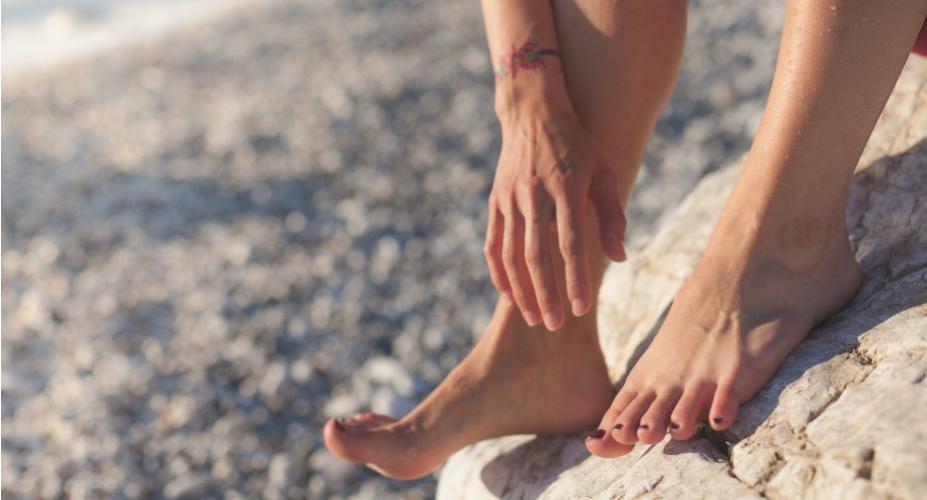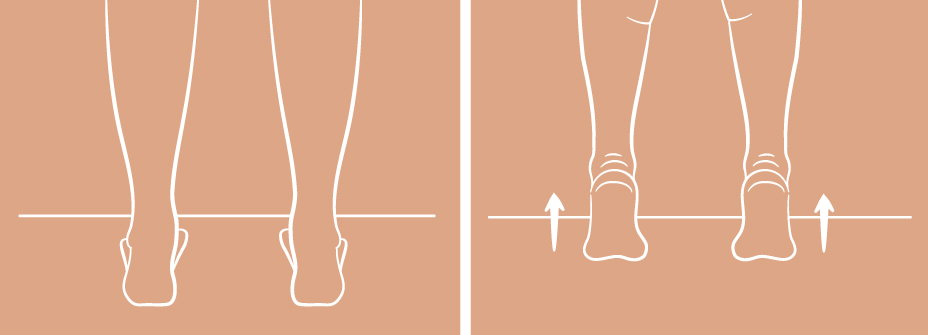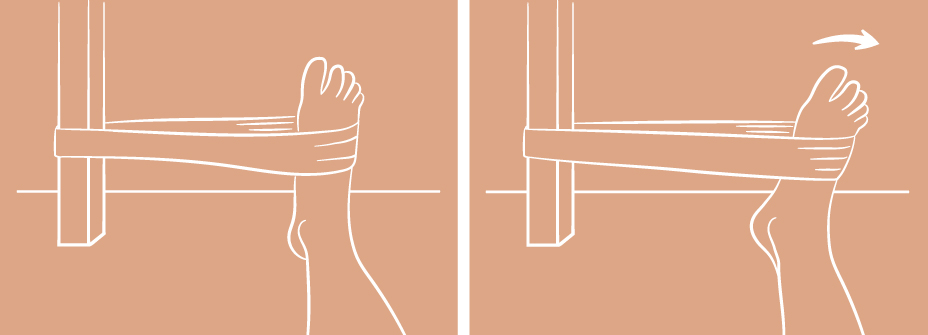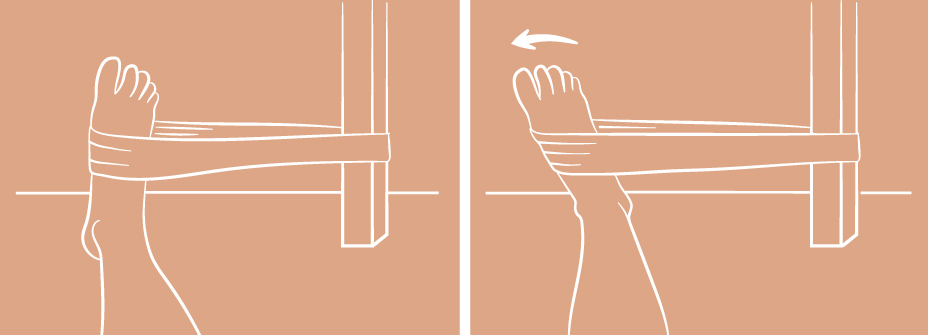
Written By: Paul Langer, DPM — Superfeet Wellness Panel Member. Paul Langer is a sports medicine podiatrist who treats athletes of all abilities at Twin Cities Orthopedics in Minneapolis, Minnesota. He is the author of Great Feet For Life and lectures internationally on the topics of lower extremity health and footwear.
Feet, like the people attached to them, come in many shapes and sizes. Some people who have flat feet experience very little pain, fatigue or discomfort. But for others, having flat feet can cause problems. Flat feet can contribute to foot pain and in some cases, are also linked to knee, hip and back pain.
Treatments for symptomatic flat feet include footwear changes and strengthening and flexibility exercises.
This article will focus on strengthening exercises for flat feet. An often under-appreciated benefit of strengthening exercises is that they also improve elasticity of soft tissue and thus flexibility, especially if done through the full range of motion.
First, it is important to understand that flat feet are not caused by weak muscles. There are other factors that contribute to flat feet, like overly elastic ligaments and/or the altered alignment or range-of-motion of joints. While strengthening the muscles cannot make a flat foot less flat, it can help the body compensate for some of the abnormal forces which contribute to pain or fatigue in symptomatic individuals.
Muscles of the Feet
There are two important groups of muscles in your feet. The intrinsic muscles (IMs) are small muscles that originate in the feet and provide stability and support. The extrinsic muscles (EMs) are the large muscles that originate in the lower legs and attach to the feet via tendons to provide movement. These muscles need to be strong and remain in balance in order to provide proper support and movement.
About Intrinsic Muscles of the Feet
It is only recently that we have started to appreciate the importance of the foot IMs. A theory proposed in 2014 equated the IMs of the feet to the core muscles of the pelvis.* Just as inhibition and weakness of the pelvic stabilizing core muscles can contribute to low back , knee and hip pain, the authors proposed that inhibition and weakness of the IMs can contribute to foot and ankle pain. Keep in mind that this theory that has not been fully validated. But, for those who treat foot and ankle injuries, it makes sense that having strong intrinsic muscles is an important part of not only treating injuries but also preventing them.
Note: muscles can not only become weak but they can also become inhibited, meaning the muscles may have adequate strength but are poorly activated so they do not fire properly. Your feet touch the ground for about a second when walking and less than half a second when running so any delay in firing can contribute to problems.
Flat Feet Exercises: Intrinsic Muscle Strengthening
For those who have foot pain related to flat feet we recommend these exercises daily and then when pain-free doing them 2-3 times per week for maintenance. Keep in mind that there are many variations of these exercises and it may be a consideration to have a medical professional provide guidance on which are best for your individual needs.
(1) Toe Yoga
Intrinsic muscles can be activated by doing “Toe Yoga”. Begin by standing barefoot, press the big toe into the ground while raising the lesser toes. Hold for 2-3 seconds then repeat 10 times. Then do the opposite. Press the small toes into the ground while raising the big toe. Do this daily. For some, it is difficult to do at first and then becomes much easier as the muscles become more activated. You should not see any movement in the ankles or knees when you do this. The only movement should be in the toes and arch.
(2) Short Foot Exercise
The “short foot” exercise is another method to activate and strengthen the IMs. Place the foot flat on the ground and pull the toes back towards the heel without curling the toes up or down. Essentially you are making the foot shorter by contracting the muscles that raise the arch and pull the forefoot closer to the heel. This exercise should be done from a seated position first and then once it becomes easy should be done weightbearing. This exercise can be done either barefoot or in shoes and can be done randomly throughout the day.
(3) Ball Pick-Up
A more playful way to activate and strengthen the IMs along with the EMs is to spend 1 to 5 minutes using your toes to pick up a small, soft ball.
About Extrinsic Muscles of the Feet
The extrinsic muscles that are most important to strengthen for flat feet are the Posterior Tibial (PT) and Peroneus Longus (PL). The calf muscles and others are also important but we will focus on these two because they are often overlooked. The PT muscle originates on the lower leg and wraps around the inside of the ankle (medial) to support the arch while the PL wraps around the outside of the ankle (lateral) and then wraps under the foot to attach to the base of the 1st metatarsal in the arch.
Flat Feet Exercises: Extrinisic Muscle Strengthening
For those who have foot pain related to flat feet we recommend these exercises daily. Then, when pain-free, do them two to three times per week for maintenance. Keep in mind that ther are many variations of these exercises and it may be a consideration to have a medical professional provide guidance on which are best for your individual needs.
(1) Weight-Bearing Heel Raises
Weightbearing heel raises are good for strengthening both the PT and PL muscles, along with some others. It is best to do these barefoot on a flat surface with something to hold on to for balance, like a table. Raise from a flat foot position in a slow, controlled movement up on your forefoot as high as you can go then lower in a slow, controlled movement back to a flat foot position. You may start out working both legs together but transition to single leg heel raises as the exercise becomes easier. Typically 3 sets of 10 each day are recommended as a starting point. Increase quantity and frequency or add weights as strength improves. (Doing these with weights can make them more challenging. Some people will use a backpack with weights inside so that their hands are able to be used for stability.)


(2) Non Weight-Bearing Heel Raises
The PT and PL muscles can also be isolated in nonweight bearing position by using resistance bands anchored to a sturdy table leg and then wrapped around the forefoot.
This can be done in a seated position either in a chair or on the floor. The Peroneus Longus can be isolated by using the heel as a pivot against the floor and externally rotating the foot outward and away from the table. When exercising the right foot, the table leg would be to the left of the foot.


Exercising the PT muscle is basically the opposite movement. Again, anchor the heel on the ground but now the the foot is internally rotated against the resistance band. When exercising the right foot, the table leg would be to the right of the foot.


Both of the exercises are done daily for three sets of ten a starting point and increased as they become easier.
Another great way to work all muscle groups is to walk barefoot on sand or a soft, grassy surface. The dynamic movement of a natural footstep on a natural surface puts it all together and frankly, walking outside is a lot more fun than doing these sometimes tedious exercises indoors.




